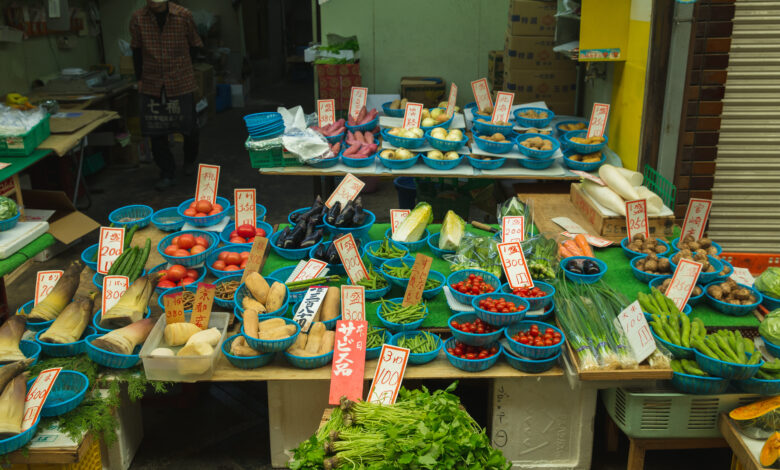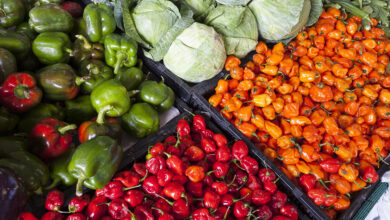What is Agricultural Marketing?

What is Agricultural Marketing?
Agricultural marketing is the process of selling agricultural products to consumers through various channels, such as wholesalers, retailers, and directly to consumers. It encompasses all the activities involved in bringing agricultural products from farms to the final consumer, including production, processing, distribution, and advertising.
Marketing in agriculture has become an essential component of modern agriculture. It helps farmers to get the best price for their products and enables consumers to access high-quality agricultural products at competitive prices. This article explores the different aspects of agricultural marketing and its significance in modern agriculture.
The Importance of Agricultural Marketing
Agricultural marketing plays a crucial role in the growth and development of the agricultural sector. It connects farmers to consumers and ensures that agricultural products are distributed efficiently and effectively. The following are some of the reasons why agricultural marketing is important:
Economic Development
Agricultural marketing contributes to the economic development of rural areas by providing income opportunities for farmers and creating jobs in the processing, distribution, and marketing of agricultural products. It also generates foreign exchange earnings through exports and contributes to the national gross domestic product (GDP).
Food Security
Agricultural marketing ensures that food is available to consumers at affordable prices. By linking farmers to markets, agricultural marketing facilitates the movement of food from surplus regions to deficit regions, ensuring that all consumers have access to a diverse range of high-quality agricultural products.
Price Stability
Agricultural marketing stabilizes prices by reducing market volatility and ensuring that prices are reflective of supply and demand. This helps farmers to plan their production and investment decisions, knowing that they will receive a fair price for their products.
Product Quality
Agricultural marketing ensures that agricultural products meet the required standards of quality and safety. This is important for consumer health and safety and also helps to maintain the reputation of the agricultural sector.
Innovation and Technology
Agricultural marketing encourages the adoption of new technologies and innovations in the agricultural sector. It provides a platform for farmers to learn about new production and marketing techniques and to share their experiences with other farmers.
Components of Agricultural Marketing
Agricultural marketing consists of four main components, which are:
Production
Production is the first component of agricultural marketing. It involves the cultivation of crops and the rearing of livestock. Farmers must produce agricultural products that meet the quality and quantity requirements of the market.
Processing
Processing involves transforming raw agricultural products into finished products that are suitable for consumption or further processing. Processing adds value to agricultural products and makes them more marketable.
Distribution
Distribution involves moving agricultural products from the point of production to the final consumer. It includes transportation, storage, and logistics. Efficient distribution is crucial for ensuring that agricultural products are available to consumers in a timely and cost-effective manner.
Marketing
Marketing is the final component of agricultural marketing. It involves promoting agricultural products to consumers through advertising and other marketing techniques. Marketing helps to create demand for agricultural products and increases their visibility in the market.
Agricultural Marketing Channels
Agricultural products can be sold through various marketing channels, which include:
Wholesale Markets
Wholesale markets are physical locations where agricultural products are traded in bulk. Farmers bring their products to these markets, where they are sold to traders and other buyers. Wholesale markets are common in many developing countries, where they provide an important platform for farmers to sell their products.
Retail Markets
Retail markets are physical or online stores where consumers can purchase agricultural products. Retail markets offer a diverse range of products to consumers and provide an important platform for small-scale farmers to sell their products directly to consumers.
Direct Sales
Direct sales involve selling agricultural products directly to consumers without intermediaries. This marketing channel is becoming increasingly popular, as consumers are becoming more conscious of the origin and quality of their food.
Contract Farming
Contract farming involves a contract between farmers and buyers, where the farmers agree to produce a specific quantity and quality of agricultural products, and the buyers agree to purchase the products at an agreed price. Contract farming provides farmers with a guaranteed market for their products and helps to ensure that the products meet the required quality and quantity standards.
Agricultural Cooperatives
Agricultural cooperatives are organizations formed by farmers to collectively market their products. Cooperatives allow farmers to pool their resources and market their products more effectively, increasing their bargaining power and reducing their marketing costs.
Agricultural Marketing Strategies
Agricultural marketing strategies are the approaches used by farmers and other stakeholders in the agricultural sector to promote and sell agricultural products. The following are some of the common agricultural marketing strategies:
Branding
Branding involves creating a unique identity for agricultural products that differentiate them from other products in the market. Branding helps to create product recognition and loyalty among consumers, which can lead to increased sales and market share.
Advertising
Advertising involves promoting agricultural products through various media channels, such as television, radio, newspapers, and online platforms. Advertising helps to create awareness about agricultural products and can influence consumer behavior and purchasing decisions.
Packaging
Packaging involves designing and producing attractive and functional containers for agricultural products. Packaging not only protects the products but also helps to create a positive image of the products and can influence consumer purchasing decisions.
Price Differentiation
Price differentiation involves offering different prices for different market segments. Farmers can offer lower prices to wholesale buyers and higher prices to retail buyers, for example. Price differentiation helps to maximize revenue and profits and can also help to create a more efficient and equitable distribution system.
Market Segmentation
Market segmentation involves identifying different market segments and tailoring marketing strategies to meet their specific needs and preferences. For example, farmers can target different market segments based on their age, income, lifestyle, and other factors.
Challenges in Agricultural Marketing
Agricultural marketing faces various challenges that can affect the efficiency and effectiveness of the marketing system. The following are some of the common challenges in agricultural marketing:
Market Access
Many small-scale farmers in developing countries face challenges in accessing markets due to poor infrastructure, lack of market information, and limited bargaining power. This can limit their ability to sell their products at fair prices and can also limit their access to markets for inputs and other resources.
Price Volatility
Price volatility is a common challenge in agricultural markets due to fluctuations in supply and demand, weather conditions, and other factors. Price volatility can create uncertainty for farmers and can also affect the affordability and availability of agricultural products for consumers.
Quality and Safety Standards
Many agricultural products are subject to quality and safety standards imposed by governments and international organizations. Meeting these standards can be challenging for farmers, especially small-scale farmers who may not have the resources and knowledge to comply with the standards.
Climate Change
Climate change is a growing challenge in agricultural marketing, as it can affect the production, quality, and availability of agricultural products. Climate change can also affect the distribution and marketing of agricultural products, as extreme weather events can disrupt transportation and storage systems.
Conclusion
Agricultural marketing is a critical component of modern agriculture, connecting farmers to consumers and ensuring the efficient and effective distribution of agricultural products. Agricultural marketing contributes to economic development, food security, price stability, and product quality, among other benefits. However, agricultural marketing faces various challenges, including market access, price volatility, quality and safety standards, and climate change. Addressing these challenges requires collaborative efforts by all stakeholders in the agricultural sector, including farmers, governments, and international organizations.



